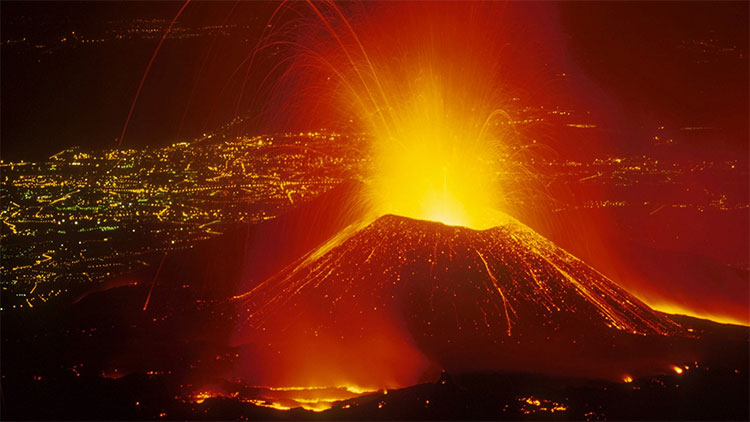Europe's largest volcano can slide into the sea causing tsunamis
Etna volcano in Sicily, Italy is being pulled into the sea by gravity, causing the slopes to collapse, causing tsunamis in the future.
Scientists found the southeast side of the volcano Etna in Italy rising above the ground and sinking into the ocean at the same time, Live Science reported. These two movements may lead to a risk of mountain slopes , according to a study published in October 10 in Science Advances.
"We need to better understand how this shift takes place and what factors might cause the collapse" , Morelia Urlaub, marine geological researcher at Helmholtz GEOMAR Ocean Research Center in Kiel, Germany, said. . This mountain has been active since 6000 BC and is in the cycle of eruption lasting from September 2013, according to the Smithsonia Institution's Global Volcanic Program.

Etna volcano works continuously for thousands of years.(Photo: Wikipedia).
The research team used satellite data and GPS measurements. They observed that the southeast flank of Etna volcano is approaching the sea for at least 30 years. In March, scientists from the Open University in the UK reported that the mountain slopes averaged about 14 millimeters per year between 2001 and 2012.
According to Urlaub, researchers are arguing that the result is due to the movement of magma below and in the heart of the mountain or of gravity. Etna volcano regularly sprayed material on the ridge, and gravity pulled new matter downward."It's common for large volcanoes. They extend at the base of the mountain , " Urlaub said.
The ridge continues to lie under the coast of Sicily and the Mediterranean. So far, no studies have measured the level of displacement below sea level of mountainside. Using the undersea sensor network, Urlaub and colleagues measured how transmitting sound between transponders 90 minutes from April 2016 to July 2017. The time of broadcast sound revealed the distance between the transponders, through which the team could detect any changes in the seabed during the study period.
They noticed for 8 days in May 5/2017, a fault in the underground side of the volcano moved 4cm. This is not an earthquake because the transition takes place without seismic waves but a phenomenon of slipping . The area where the research team measured the inclination sliding way away from the magma chamber in the center of Etna. That means the above movement is not caused by rising magma within the volcanic underground chamber. It is caused by gravity.
"From other volcanoes in geologic records, we know this kind of catastrophe causes huge and rapid landslides. If landslides fall into the sea, they can create tsunamis , " Urlaub said. strong. The team decided to follow up more closely to detect any changes in the mountain's movement and estimate the risk of collapse.
- America tried to create a tsunami bomb
- Europe's largest volcano erupted violently
- The world's largest volcano in Hawaii shows signs of 'waking up'.
- The world's largest volcano revived
- 8 most exciting chutes in the world
- The world's largest volcano lies under the Pacific Ocean
- Lexus introduces SLIDE air cushion
- Playing water slide to see ... pain in the buttocks: maybe you have been injured in the part that nobody expected
- Yellowstone volcano is dying?
- Indonesian volcano sprayed 8,000 meters of smoke ash
- Video: Japan's largest volcano
- The 'killer' volcano is about to re-export
 Is the magnetic North Pole shift dangerous to humanity?
Is the magnetic North Pole shift dangerous to humanity? Washington legalizes the recycling of human bodies into fertilizer
Washington legalizes the recycling of human bodies into fertilizer Lightning stone - the mysterious guest
Lightning stone - the mysterious guest Stunned by the mysterious sunset, strange appearance
Stunned by the mysterious sunset, strange appearance